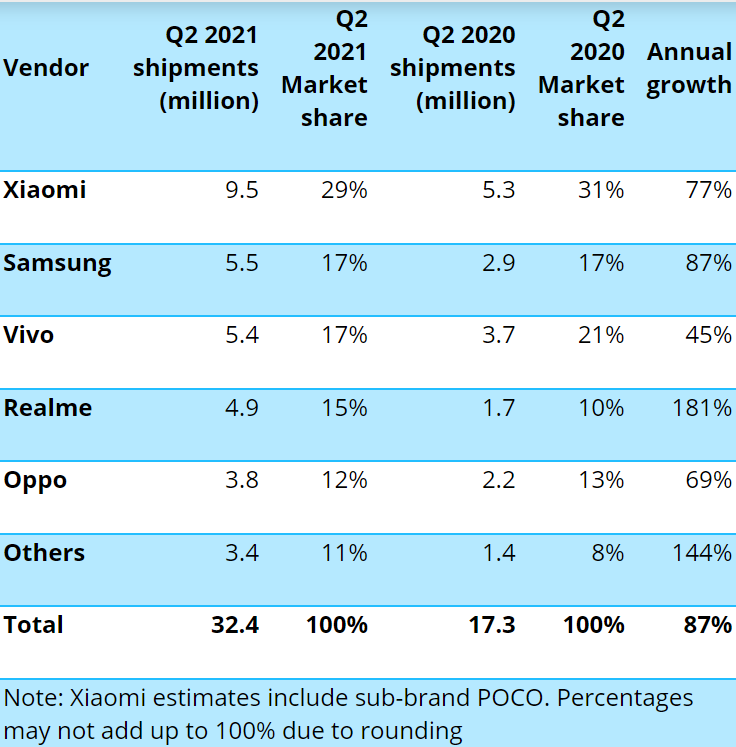Lessening of demand due to the second wave of Covid-19 in India dampened smartphone shipments as they fell 13% between Q1 and Q2 2021, to 32.4 million units.
But, as it happened, since there was a total lockdown in Q2 2020, the year-on-year comparison looks good, with shipments up 87%.
Among the brands, Xiaomi remained the market leader, shipping 9.5 million units for a 29% share. Samsung continued to cling to its second place, shipping 5.5 million units for a 17% share. Vivo was third with 5.4 million units shipped, while Realme overtook Oppo for fourth place, shipping 4.9 million units against Oppo’s 3.8 million.
All these numbers emerged in a report published by market analysis firm Canalys.
The good news is that the report predicts that India will rebound in the second half of 2021, aided by accelerated vaccinations, as well as brands expanding promotional activities and new product releases.
- Global smartphone sales grew 26% in 1st Quarter - But not everything is rosy
- Indian offline retailers allege Samsung of favouring online sales
Xiaomi, Realme benefit due to strong online presence

Canalys Analyst Sanyam Chaurasia said “for smartphone vendors, this was a wake-up call, and shows the importance of bolstering both online and offline presences equally. Smartphone vendors in India had assumed Covid-19 would not return, and several planned to invest in infrastructure for branded stores and partnerships with third-party offline channels. But once again they were quickly compelled to pivot to an online strategy.”
Canalys in its report said that the brands with strong online presence had the most momentum. Xiaomi, despite its overall sequential decline, actually grew its online business, primarily thanks to the Redmi Note 10 series,” said Jash Shah, Canalys Research Analyst.
Realme also saw online momentum, particularly with its Narzo 30 series, as it used price cuts during ‘brand-focused days’ to overtake Oppo. Oppo entered the direct online channel in May, and though it may not be as profitable as third-party retail, it will allow Oppo to conduct more effective product marketing and increase cross-selling opportunities.
It may be recalled that in 2020, the online sales share of handsets increased globally due to Covid-19, with 1 in 4 handsets being sold online. And India was on top with 45% of total sales effected through online purchases.
from TechRadar - All the latest technology news https://ift.tt/2UIIh6x

0 coment�rios: